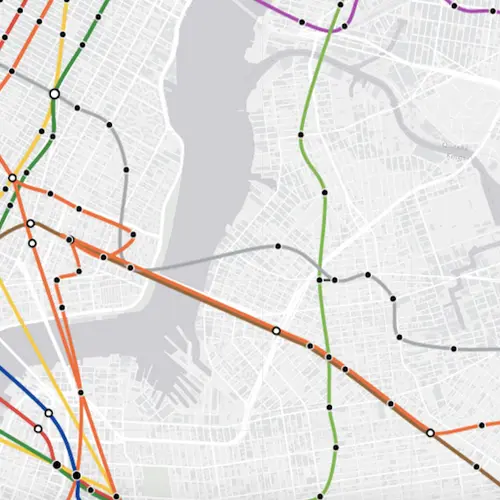New Interactive Subway Game Lets You Build the Transit System of Your Dreams

A new interactive New York City subway planning game created by electrical engineer Jason Wright gives you a chance to try your hand at building the subway system of your dreams. Though based on a similar idea to Dinosaur Polo Club’s Mini Metro, the game goes further and gives players a lot more to work with. “Brand New Subway” lets players start from scratch or use current subway maps, modify historic maps dating as far back as the 1900s or use maps from the future (like the planned 2025 subway system map pictured above) (h/t DNAinfo).

Wright created the game as a submission to “The Power Broker” game design competition, a challenge to turn a seminal work of urban design literature into a game–in this case, to transform Robert Caro’s 1974 Robert Moses biography into “playable, interactive form that preserves the flavor and themes of the written work.” Submissions could be in the the form of a digital or tabletop game.
The completely addictive game is built on a real map of New York City and draws from a variety of data sources (census data, jobs data, existing transportation demand data, etc.). When players build stations the data is used to calculate factors like daily ridership at each station and even to estimate things like single-ride MetroCard fare based on the costs of construction and maintenance. Ridership and fare are combined to inform a letter grade which is based on the actual daily ridership of today’s subway (the current system gets a B).

One solution to the L Train tunnel conundrum.

The F really needs to do a better job in the East Village.
Players can use the game to address real problems of affordability and lack of reach, or build a total fantasy transit system that, for example, only runs between home and the office with a stop at the grocery store.
While Moses was known to favor highways over public transportation, the designer believes the game embodies the idea of autonomy and the controversial planner’s utter disregard for political oversight. In the “Sim City”-like game, the player “acts as designer, engineer, and omnipotent governor all in one” with later versions even allowing players to add “natural disasters.”
Wright says the game is targeted at people who actually ride the subway and feel they have an investment in what they’re designing, encouraging players to put on their Robert Moses hats and “improve on transportation in their own neighborhoods and in ways to which they have a personal connection.”
[Via DNAinfo]
RELATED:




































